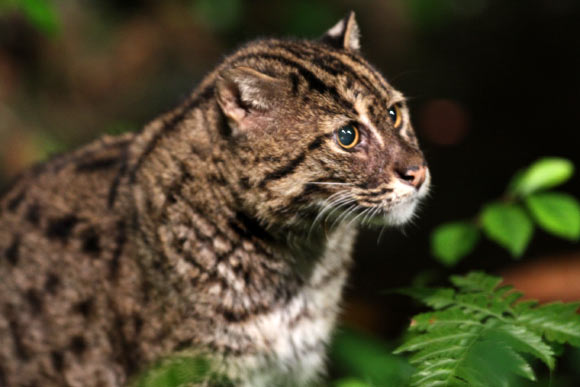Spotted by researchers from Cambodia’s Centre for Biodiversity Conservation, the fishing cat (Prionailurus viverrinus) – a medium-sized wild cat which prefers wetland habitats – has not been recorded in the country since 2003.
The Centre for Biodiversity Conservation (CBC), a partnership between Fauna & Flora International and the Royal University of Phnom Penh, reports that the organization’s experts spotted the fishing cat after checking previously deployed motion-sensitive cameras.
“The fishing cat’s preference for wetland habitat had led to severe population declines throughout much of its Asian range,” said Ret Thaung, project leader at Fauna & Flora International.
“Asian wetland habitats are rapidly disappearing or being modified by human activity, so fishing cat numbers have declined dramatically over the last decade and the remaining population is thought to be small,” she said.
“Fishing cats are believed to be extinct in Vietnam, while there are no confirmed records in Lao PDR and only scarce information about the species in Thailand and Cambodia.”
“It is clear that urgent steps are needed to protect these cats from snaring and trapping and to conserve their wetland habitats – but to do this effectively we needed to get a better idea of where they live.”
The CBC’s survey was designed to address some of these knowledge gaps.
Following leads gathered during interviews with local villagers, the scientists set up 32 cameras at five locations and left them to record what passed by.
Sifting through the images, they were surprised to discover fishing cats at two sites in south-west Cambodia: Peam Krosaop Wildlife Sanctuary and Ream National Park.
The researchers now aim to develop a fishing cat conservation action plan focused on the two sites.
“This will primarily involve community education and measures to reduce threats. We also plan to continue our research and improve the ability of local rangers to correctly identify fishing cats and help with research and conservation for the species,” Ms Thaung said.








